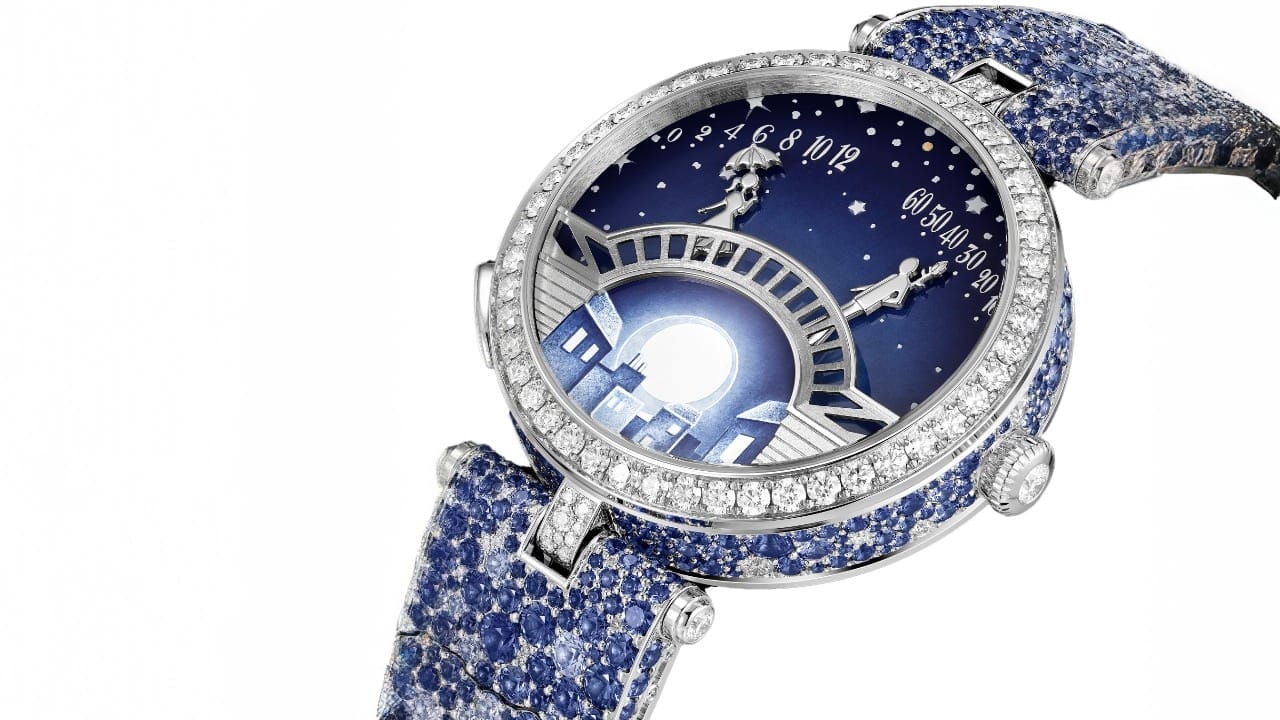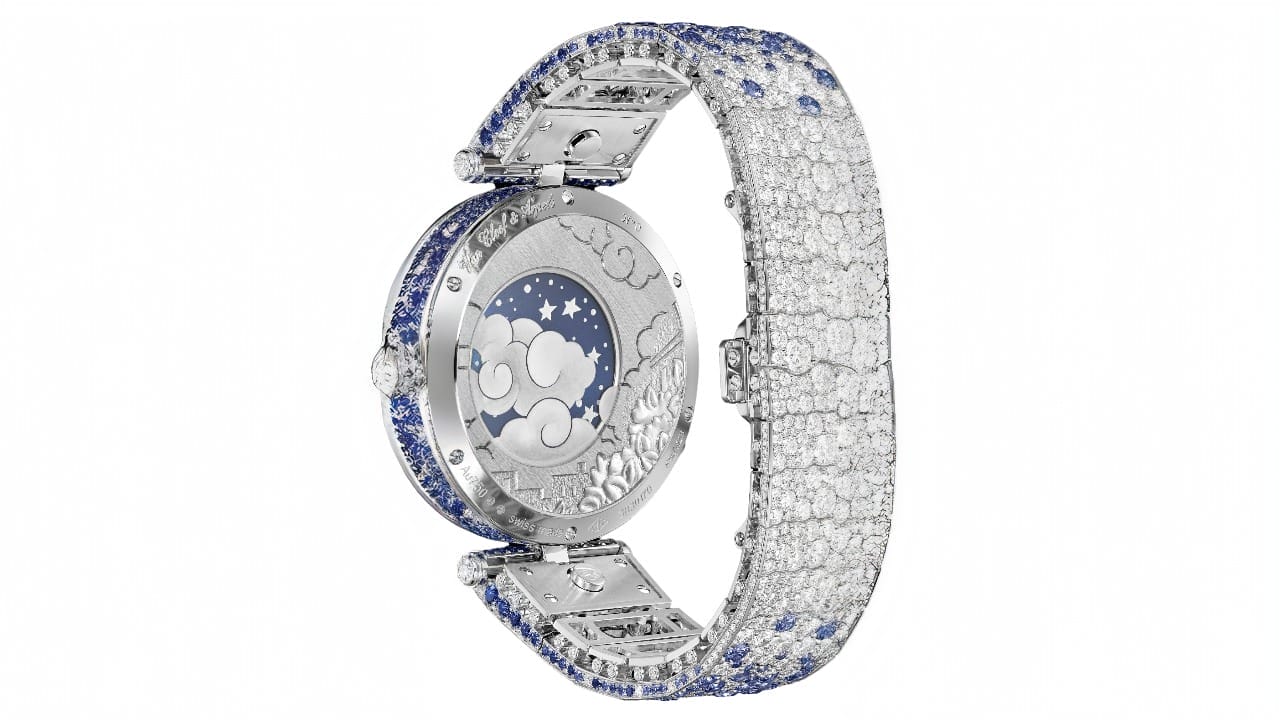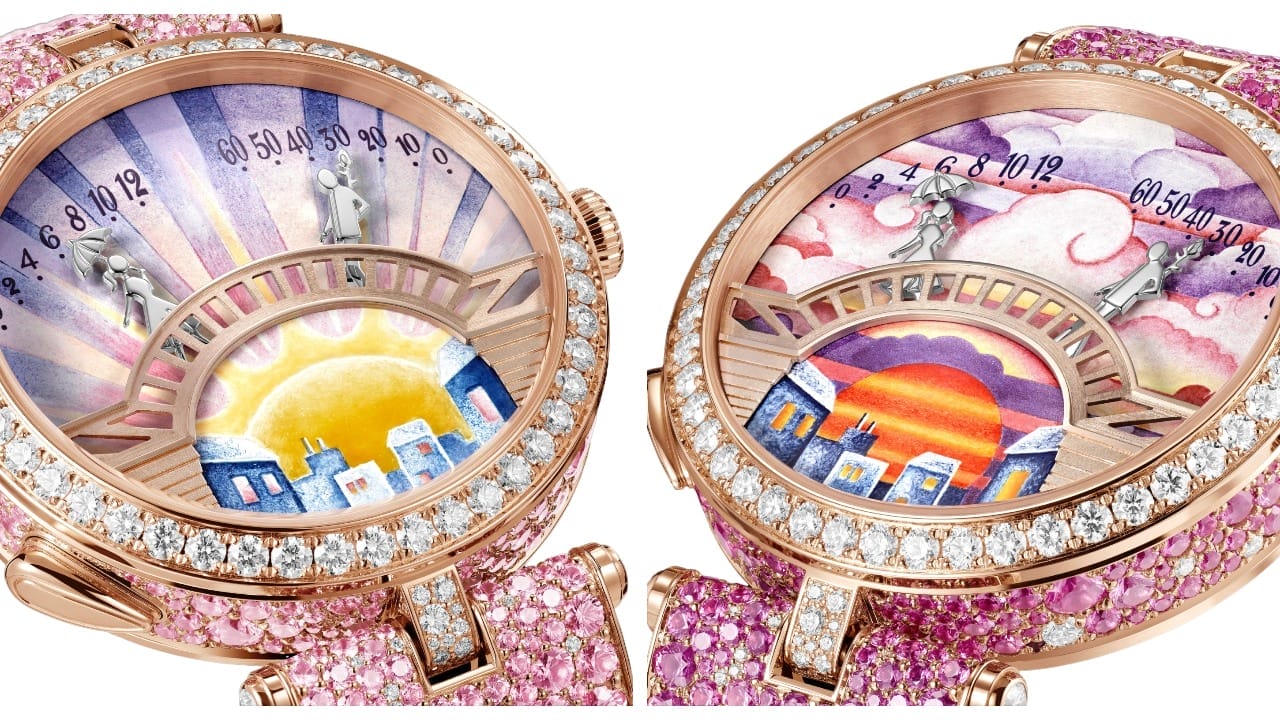Watches & Wonders is, without doubt, the industry’s most important event of the horological calendar. Growing in size over the past few years, it is a crowded space and can be a challenge for some brands to stand out. Van Cleef & Arpels has something of an advantage in this respect—what other brand can so fearlessly embrace such whimsical subject matter as butterflies, faeries, and Parisian paramours? It is a refreshing change from the perpetual calendars and integrated bracelet steel sports watches that typically dominate the chatter on the floor. Furthermore, even if the maison is better known for its jewellery proficiency, its increasing proficiency in both the mechanical and metiers d’art aspects of watchmaking will draw appreciation from even the stodgiest of watch die-hards.
 And then there is its rich historical catalogue. Founded in Paris in 1906, the maison has been creating watches for almost its entire history. One such example is still found in the current catalogue—the Cadenas, a deceptively simple bracelet-style timepiece that was born in 1935. Consisting of a minimalist, geometric shape reminiscent of a padlock, it also features an angled dial that allows the wearer to check the time discreetly—something that was a lot more important in the early 20th century, especially for women. The collection has ebbed and flowed with trends over the years, experimenting with various fashionable colours and materials of the times, and for 2025, receives a new—and rather precious—contemporary guise. A yellow gold bracelet and case and a white gold dial is fully paved with snow-set diamonds, highlighted by a row of princess-cut sapphires.
And then there is its rich historical catalogue. Founded in Paris in 1906, the maison has been creating watches for almost its entire history. One such example is still found in the current catalogue—the Cadenas, a deceptively simple bracelet-style timepiece that was born in 1935. Consisting of a minimalist, geometric shape reminiscent of a padlock, it also features an angled dial that allows the wearer to check the time discreetly—something that was a lot more important in the early 20th century, especially for women. The collection has ebbed and flowed with trends over the years, experimenting with various fashionable colours and materials of the times, and for 2025, receives a new—and rather precious—contemporary guise. A yellow gold bracelet and case and a white gold dial is fully paved with snow-set diamonds, highlighted by a row of princess-cut sapphires.
View more of Cadenas
The mechanical highlight of the year, however, is a new Poetic Complications timepiece—the Lady Arpels Bal des Amoureux Automate, which sports a brand-new automaton movement that depicts a couple dancing under the stars. At noon and midnight, they come together for a kiss, an animation that can also be re-created on-demand via a pusher. The setting is that of a guinguette, a type of casual outdoor tavern where Parisians would gather to eat, drink, and dance. The protagonists would be known to Van Cleef & Arpels fans—they are, in fact, meant to be the same man and woman who grace the brand’s iconic Pont des Amoureux collection, which had its own animation wherein the lovers would meet on a bridge for a kiss.
Aside from the change in scene, the major difference between that and the new Bal des Amoureux is that the latter has a more complex animation. Larger as well, relative to the dial, the lovers do not just move in one dimension towards each other—they are also articulated at three points, leaning into each other for their kiss while holding hands. “It’s the next chapter, I’d say—the same lovers, meeting at a different spot in Paris,” says Rainer Bernard (pictured above), head of research and development for watchmaking at Van Cleef & Arpels. “To make it is a different story; to create the lovers in a way that they actually allow this movement.”

It started, as it always does with Van Cleef & Arpels, with a story and a sketch, well before any mechanical considerations. Although it continued the tone set by Pont des Amoureux, it was immediately clear to Bernard that Bal des Amoureux would require an all-new movement. It took some four years of development and involved three patented elements. Despite the more complex demands of its animation, the movement required only 343 components—by comparison, Pont des Amoureux needed 339, only four fewer. The lynchpin of the new movement is a single, specially designed cam that governs all of the animations involved.
“When we design movements, the objective is to create something smart, and not to make it overly complex,” Bernard explains. “To use as few pieces as possible and to combine the functions of the 343 components, I can assure you that every one of them is necessary.”

The new movement, which was designed in-house, is thus a testament to the brand’s increasing mechanical prowess. Since the first Poetic Complications watch from 2006, Van Cleef & Arpels has maintained successful collaborations with specialists such as Agenhor and Christiaan van der Klaauw to aid in producing movements. But the maison’s experience and confidence in the field has meant that it is now self-sufficient. The big advantage of an in-house team, Bernard says, is that it allows a much more flexible and whimsical design approach that can accommodate new ideas and changes.
“It was very difficult for a third party to integrate our constant challenges. Internally, we have a team that’s very flexible and now we can do it—we can change things at the last minute if we want to,” he explains. “Today, we have a very good R&D team, and we are now totally capable of developing (projects like) Bal des Amoureux in-house.“

Despite all the work that went into the movement, one of its objectives was also to stay as hidden as possible. In the final result, there are no visible screws or attachment points, and the cutouts in the dial are hidden entirely under the figures—even when they move. “This is very important—you can’t see any technical element,” Bernard says. “So, you look at it and you say—how is this done? And when you say this, we did a good job.” Although some are appreciative of the mechanics and, indeed, Bernard and his team are happy to elaborate on the details if asked, he also feels that, for others, it is important to maintain the illusion and sense of magic that such an automaton can conjure.

The dial of Bal des Amoureux is also a work of art on its own. Largely monochromatic in a way that recalls the original Pont des Amoureux in 2010, it has a surprising amount of depth. The night sky and cityscape background are largely accomplished via the traditional grisaille technique, which involves building highlights of white over a dark blue base layer. Subtle touches of colour, such as in the clouds and lanterns, are added using a more contemporary coloured grisaille technique. The cobblestones in the foreground are in white gold, with a sunray finish, to enhance the sense of perspective.
Pont des Amoureux, in the meantime, has received its own updates, in the form of four new expressions. The mechanism has not changed, but the dial backdrops have—each new version depicts the scene at a different time of day. Dawn, morning, and dusk are depicted in gloriously coloured grisaille enamel, while a moonlit night has its own enigmatic charm. Van Cleef & Arpels is no stranger to enamel, and this quartet—which is supported by matching gem-set bracelets—adds to the maison’s already considerable portfolio. In fact, the coloured grisaille technique is one that Van Cleef & Arpels developed in its own enamel workshops in Geneva, building layers of colour on a light background as opposed to the traditional method of applying highlights over a dark background and limited to monochrome scenes. The development of new colours is not a trivial matter in the art of enamel—combining pigments is an art and science of its own, and it takes considerable experimentation to understand how the colours will end up after firing in a kiln.
“We have new colours that we developed and, combined with our mastery of grisaille, enables us to push this technique even further,” Bernard says. “It gives you this kind of watercolour aspect, because we can create beautiful transitions of colour.” These gradual colour transitions, which are much more difficult or impossible to achieve with other enamel methods, are fully showcased on the new timepieces—soft, pastel colours melt into one another in a way rarely seen on a watch dial. “We love this technique. You can create incredible things with it,” Bernard says. “We know how to make these colours—it is not that easy, especially if you want to have a very specific tonality. To get it perfect takes a long time.”








